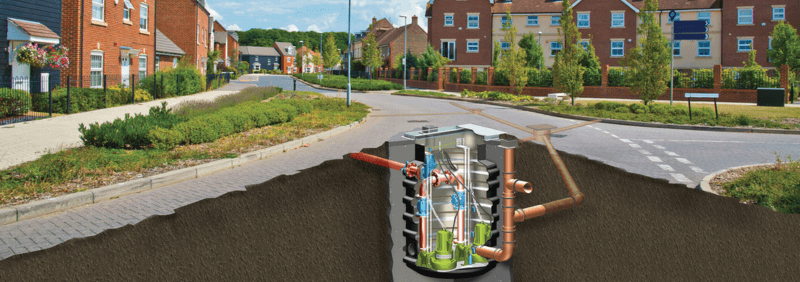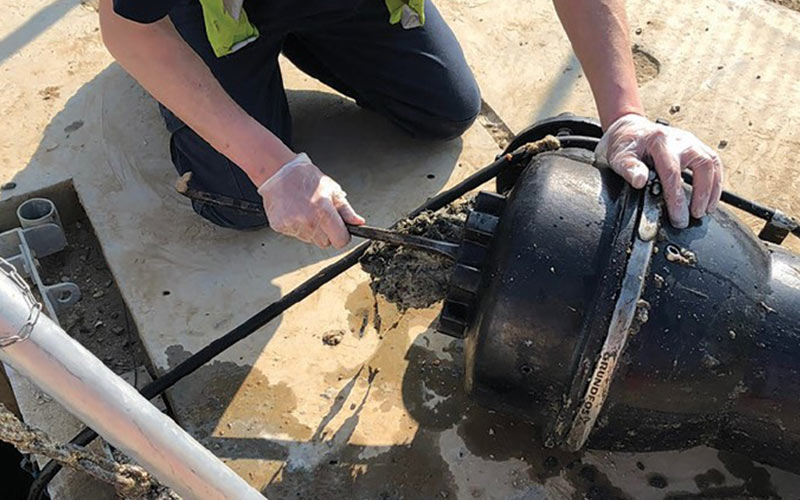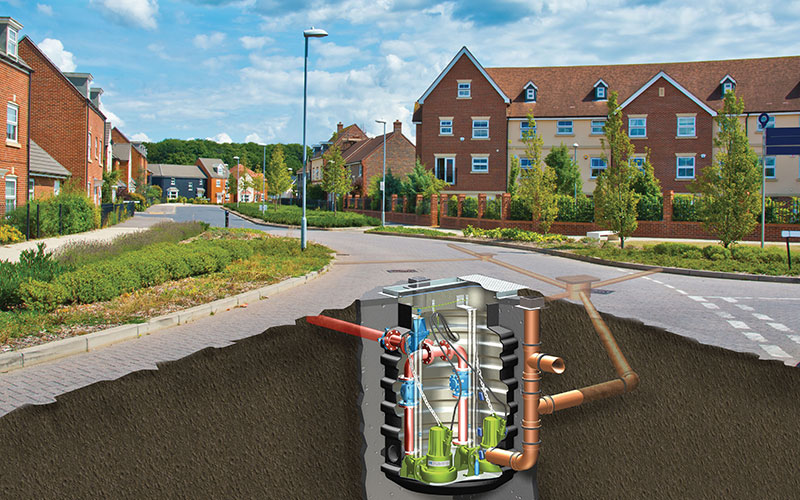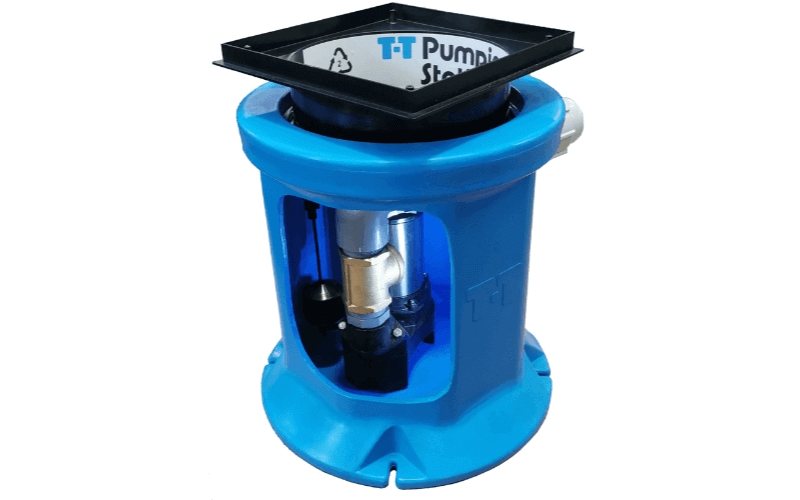What is a Pumping Station?

What is a pump station?
A pump station is a publicly or privately owned structure that manages waste and surface water (e.g. rain and floodwater) in domestic, commercial and industrial settings.
They typically consist of a chamber, pumps, valves, pipework, water level sensor and control panel for automatic operation. Pump stations collect wastewater in their chambers and pump it under pressure to the main sewer networks, after which gravity directs the flow to a water treatment plant for processing before it is recycled or returned to the wider environment.
What are the different types of pumping station?
- Package – This is any standardised pumping station (above or below ground) that is supplied as a complete system with all the components required for automatic waste management.
- Below ground - A discrete solution ideal for managing wastewater, drainage water and sewage. They are a popular solution for housing estates, schools, hospitals, nursing homes, hotels and many other locations where below ground installation is viable.
- Above ground – Designed for locations where a below ground installation is not possible due to excavation restrictions. They are suitable for a wide range of surface water, sewage and drainage applications.
- Utility – Compact pumping systems designed for in-house installation, featuring gravity inlets and pressured discharge outlets. Utility pump stations are ideal for low-volume effluent output, such as toilets, sinks and other domestic utilities.
- Final effluent – These pump stations are used to move treated water, containing no solids, from the outlets of treatment plants to a body of water, drainage field or back into the public sewer system for further treatment.
Who owns pumping stations?
Private – These are package or bespoke pumping stations that are privately owned and managed, collecting wastewater from domestic, residential or commercial sites.
Adoptable – These stations are designed to comply with Sewers for Adoption/Design Construction Guidance and relevant local water authority guidelines in order to be suitable for adoption. Once adopted, the local water authority assumes responsibility for the station's continued operation and maintenance.
What are the components of a pumping station?
Pumping stations are traditionally comprised of:
Chamber - Sewage, floodwater and nuisance water from buildings and drains enter a pump station chamber, where it is stored before being pumped to the main sewer system, a treatment plant or a septic tank.
Below ground pumping stations have wet wells, where other essential components such as pumps, valves, pipework and level control devices are also located for a compact liquid management system.
Above ground pumping stations have dry wells that store waste before it is drawn up through pipework by a pump and then expelled at a higher level.
Pumps - Submersible pumps are typically used within pumping station chambers due to their durable design and capacity to operate while fully submerged.
Depending on the suspended solids content of the matter being pumped, pumps with open impellers may be used to allow solids to pass through. For pumped medium with larger solids, cutter and grinder pumps can reduce their size before pumping in order to avoid a blockage.
Valves - A variety of valves are used within pumping stations for different purposes, such as non-return valves (also known as check valves) to prevent reverse flow and air rleief valves to prevent pressure surges from gas accumulation.
Rising main - A length of pipe through which sewage is pumped to reach a high-level gravity sewer before entering the main sewer network.
Level sensor - Float switches, conductivity probes, ultrasound and radar are different methods of level contorl that are installed within chambers to monitor fluid levels for automatic pump operation. With a suitable control panel, pumps will start when the unit reaches high level (the tank is full) and stop again when it reaches low level (the tank is empty).
Flow metres - Devices used to monitor, measure and record flow rate and pressure in a pumping station. This data can then be used to assess the efficiency of the station as a whole and its individual components, such as pump output and flow efficiency through the rising main.
What can be pumped by a pumping station?
Pumping stations can be used to manage and move a variety of fluids depending on their design. Foul water pumping stations are used in domestic, commercial and municipal settings to transfer sewage and grey water away from kitchens, bathrooms and other utilities to the main sewer system.
Wastewater pumping stations can be used in industrial applications to manage the removal of waste from manufacturing processes, such as food, pulp and paper.
Final effluent pump stations are used to transfer clear water from treatment plants back to natural bodies of water, drainage fields or water distribution sites.
The T-T Pumping Stations team are on hand to help you find the most effective waste and surface water management solution for your application.
For more information, call our experts on +44 (0)1630 647200, email [email protected] or complete our online enquiry form.








